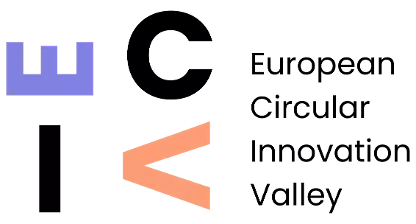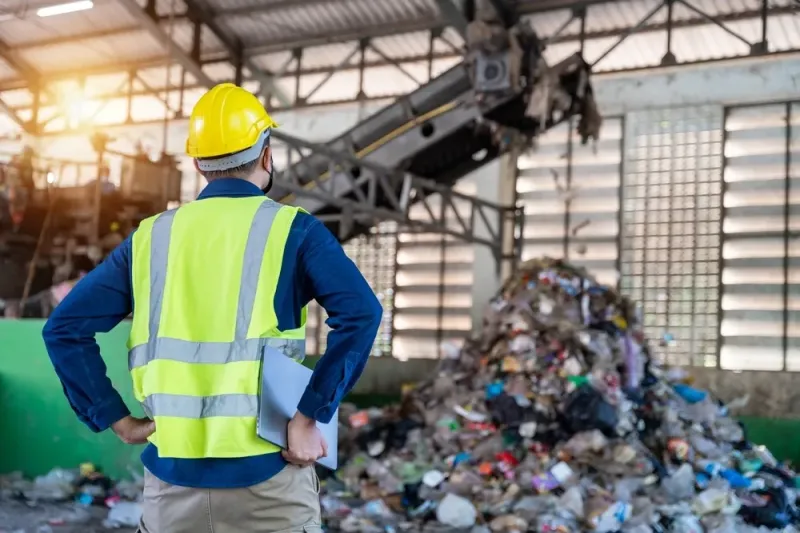A new analysis by Innovation Agency Lithuania maps the country’s value chains and asks how they can plug into Europe’s fast-growing circular economy networks. The findings spotlight three sectors where Lithuania could become a stronger player: textiles, plastics, and renewable energy technologies. But the report also makes clear that systemic gaps — from weak recycling infrastructure to fragmented cooperation across industries — still hold the country back.
Textiles: A Waste Challenge Waiting for Change
The textile sector stands out as both a challenge and an opportunity. Each year, Lithuania generates about 47,000 tones of textile waste. Roughly 71% of it ends up in mixed municipal bins, rendering it unrecyclable. Less than 0.2% is shipped abroad for recycling, mostly to the UK and Finland.
With EU rules requiring separate textile collection from 2025, Lithuania faces a looming deadline. Without a rapid scale-up in collection systems and new business models for reuse, most textiles will continue to head straight to landfills or incineration.
At the same time, Lithuania is home to Vinted — one of Europe’s largest online second-hand platforms — which demonstrates how circular business models can thrive and play a role in reducing textile waste.
Plastics: Exports Fill the Gap
Plastics and composite packaging remain another sore point. Although the total volume of packaging placed on the market has fallen — from 116,600 tones in 2020 to 82,000 in 2023 — plastics still dominate the waste stream. Recycling rates are stubbornly low, particularly for flexible and multi-layer packaging, much of which ends up burned or mixed with other waste.
Lithuania exports much of what it cannot process at home: in 2023, 8,400 tones of plastic packaging waste went to Poland and another 7,900 to Latvia. That reliance on neighbors underscores just how limited domestic recycling capacity remains.
Renewables: Growth Today, Waste Tomorrow
Lithuania’s green energy boom is already creating tomorrow’s waste streams. Solar capacity has skyrocketed nearly 30-fold in just five years — from 83 megawatts in 2019 to more than 2,400 in 2024. That expansion has brought a surge in photovoltaic panels, whose cumulative weight more than quadrupled in a single year, from 26,000 tones in 2023 to 107,000 in 2024.
Those panels may last 20–30 years, but Europe is still only beginning to develop recycling technologies capable of extracting valuable metals like silver and silicon. Lithuania also has just one company — EMP Recycling — handling lithium-ion batteries, even as demand for e-mobility and storage systems accelerates. That leaves both risks and opportunities: firms that move early could capture a strategic foothold in Europe’s circular supply chains.
Systemic Weak Spots
Beyond sector-specific challenges, the report points to structural barriers:
-
Lithuania lacks large-scale facilities to handle complex waste like advanced plastics or composite materials.
-
Public procurement rarely incorporates circular economy criteria, missing a major lever for creating demand.
-
Cooperation between municipalities, businesses, and researchers remains patchy, limiting industrial symbiosis — the practice of turning one sector’s waste into another’s raw material.
Unless addressed, these weaknesses could slow Lithuania’s ability to benefit from the EU’s circular economy transition.
What the Report Recommends
To close the gap, the study proposes several steps:
-
Launch pilot projects in textiles, plastics, and solar panel recycling with state-backed innovation funds.
-
Create a national platform to connect policymakers, companies, and researchers.
-
Build circular criteria into procurement, infrastructure, and urban planning.
-
Engage more actively in EU initiatives - just like European Circular Innovation Valley - to position Lithuania as a trusted partner for circular solutions.
The European Context
The Lithuanian assessment mirrors Europe’s broader ambitions. The EU’s Circular Economy Action Plan projects that scaling circular practices could add 0.5% to EU GDP and generate 700,000 jobs by 2030. Globally, material use is expected to double and waste generation to rise 70% by mid-century, making circularity a central plank of the European Green Deal.
For Lithuania, the stakes are both environmental and economic: stronger competitiveness, new investment, and green jobs.
A European “Dance Floor”
The study feeds directly into the European Circular Economy Innovation Valley (ECIV), a five-year, EU co-funded initiative linking nine regions into a single innovation ecosystem. By pinpointing where Lithuania’s strengths and weaknesses lie, and how they could connect across borders, the analysis will help shape upcoming ECIV sub-missions and pilot projects.


